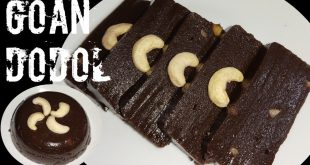Introduction to Malaysian Kuih and its popularity in India
Have you ever been enchanted by the delightful flavors of Malaysian Kuih? This delectable and colorful assortment of sweet treats has captured the hearts (and taste buds!) of many across the globe, including in India. Join us on a culinary journey as we explore the fusion of Malaysian and Indian cuisines through the art of creating authentic Kuih right in your own kitchen!
Cultural significance of Kuih in Malaysia and its connection to Indian cuisine
Malaysian Kuih holds a special place in the country’s culinary landscape, representing a rich tapestry of flavors and traditions. These bite-sized delights play a significant role in various cultural celebrations and rituals, reflecting Malaysia’s diverse ethnicities and heritage.
Interestingly, the influence of Indian cuisine on Malaysian Kuih is undeniable, showcasing a harmonious fusion between the two cultures. The use of ingredients like coconut milk, palm sugar, and spices not only adds depth to the flavors but also highlights the shared history between Malaysia and India.
The creative exchange between Malaysian and Indian culinary techniques has led to unique variations of Kuih that cater to evolving tastes while preserving traditional roots. This cross-cultural blend brings an exciting dimension to both cuisines, offering enthusiasts an opportunity to explore new gastronomic experiences.
Challenges of creating authentic Kuih in India
When it comes to creating authentic Malaysian Kuih in India, one of the main challenges is sourcing traditional ingredients. Many key components like pandan leaves, palm sugar, and coconut milk may not be readily available in local markets.
Moreover, replicating the intricate techniques and flavors passed down through generations can be a daunting task for those unfamiliar with Malaysian culinary traditions. Achieving the right balance of sweetness, texture, and fragrance requires precision and practice.
The tropical climate differences between Malaysia and India can also impact the final outcome of Kuih recipes. Factors like humidity levels and temperature variations may affect the consistency and shelf life of these delicate desserts.
However, with dedication, creativity, and willingness to adapt recipes to local ingredients without compromising on taste or authenticity, aspiring chefs in India can overcome these challenges and successfully recreate the beloved flavors of Malaysian Kuih.
Key ingredients and substitutes for making Kuih in India
When it comes to making Malaysian Kuih in India, sourcing the right ingredients is key. Some essential components include glutinous rice flour, coconut milk, palm sugar, and pandan leaves for that distinct flavor. If you can’t find pandan leaves, you can substitute with vanilla extract or a dash of green food coloring for a similar hue.
For added texture and taste, consider incorporating grated coconut or mung beans into your Kuih recipe. These ingredients not only enhance the authenticity but also bring a unique twist to the traditional dish. To sweeten your Kuih, gula Melaka (palm sugar) is typically used in Malaysia; however, jaggery or brown sugar can be great alternatives easily found in Indian markets.
Experimenting with different combinations of spices like cardamom, cinnamon, or nutmeg can infuse Indian flavors into your Kuih creations. Don’t shy away from exploring local herbs and seasonings to add an exciting fusion element to this beloved Malaysian treat!
Traditional and modern variations of Kuih influenced by Indian flavors
When it comes to Malaysian Kuih, the influence of Indian flavors is unmistakable. The rich and aromatic spices commonly used in Indian cuisine have found their way into traditional Kuih recipes, creating a unique fusion of flavors that tantalize the taste buds.
In recent years, there has been a surge in modern variations of Kuih that incorporate even more Indian influences. From using ghee instead of coconut milk to infusing cardamom and saffron into the batter, these contemporary twists on classic recipes add a new dimension to this beloved dessert.
The marriage of Malaysian and Indian culinary traditions brings about an exciting evolution in Kuih-making. Whether sticking to time-honored methods or experimenting with innovative ingredients, each variation tells a story of cultural exchange and gastronomic creativity that continues to captivate food enthusiasts worldwide.
Tips for perfecting your homemade Kuih recipe in India
When it comes to perfecting your homemade Kuih recipe in India, there are a few tips and tricks that can help you achieve authentic flavors. First and foremost, sourcing the right ingredients is key. Look for specialty stores or online platforms where you can find traditional Malaysian ingredients like pandan leaves, coconut milk, and palm sugar.
Experiment with different variations of Kuih to add your own twist while staying true to the essence of the dish. Don’t be afraid to get creative with flavors by incorporating Indian spices like cardamom, saffron, or rose water into your recipes.
Pay attention to texture and consistency when preparing Kuih batter – it should be smooth but thick enough to hold its shape when steamed or baked. Practice makes perfect, so don’t be discouraged if your first attempt isn’t flawless. Enjoy the process of learning and experimenting with this delightful fusion of Malaysian and Indian cuisines!
Conclusion: Embrace the fusion of Malaysian and Indian cuisines with
Embrace the fusion of Malaysian and Indian cuisines with a sense of adventure in your kitchen. Let the flavors and techniques from both cultures inspire you to create unique and delicious dishes that are a blend of tradition and innovation. By exploring the world of Malaysian Kuih in India, you not only expand your culinary horizons but also pay homage to the rich heritage and diversity of both countries. So, roll up your sleeves, gather your ingredients, and get ready to embark on a flavorful journey that celebrates the beauty of cultural exchange through food. Happy cooking!
 Latest Updates
Latest Updates


